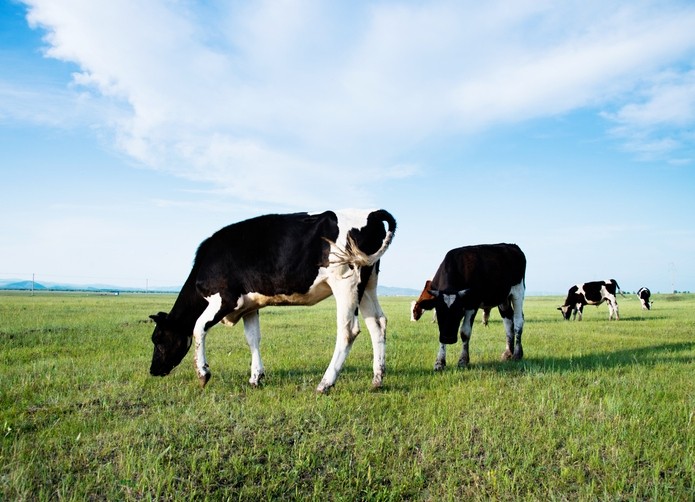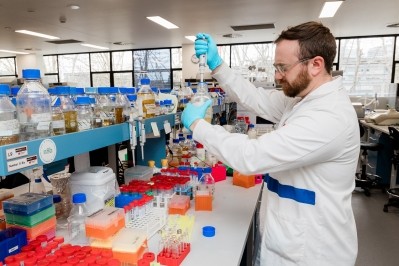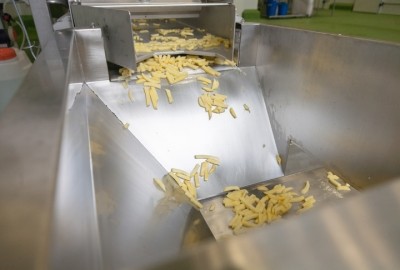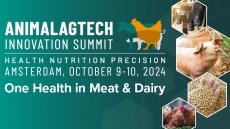Cargill China: Methane reduction must add up commercially

Since 2022, Cargill’s Technology Application Center in Bazhu, China, has been collaborating with China Agricultural University (CAU) on the Carbon Reduction Project. This initiative is designed to support China’s carbon reduction goals, which include carbon peaking by 2030 and carbon neutrality by 2060, by addressing the issue of ruminant methane emissions on dairy farms.
“The overall objective of the project is to reimagine what is possible in terms of methane reduction on a dairy farm, by leveraging Cargill’s global and local capabilities as well as CAU’s research resources,” Hongfei Zheng, North Asia group leader at Cargill, told FeedNavigator.
“And the aim is that as we reduce greenhouse gas emissions, we maintain the animal’s health and productivity, so that economically it makes sense too,” she added.
Ingredient evaluation
With this end goal in mind, the first step was to evaluate multiple ingredients and additives’ impact on methane emissions in the lab. This included measuring the amount of methane created in the rumen for each feed ingredient and testing numerous additives for their ability to affect methane emission reduction.
“We evaluated various technologies, ingredients, additives, nutritional strategies, and digital solutions to understand their impact on methane reduction. These ranged from probiotics and phytogenics, to those that redirect hydrogen in the rumen, and seaweeds which can block the process of methanogenesis,” Zheng explained.
On-farm trials
Having established each ingredient’s impact on methane reduction in the lab, the team is now validating their collective methane emission reduction ability on-farm in trials that are expected to be completed by the end of 2025.
In the trials, multiple solutions are being applied simultaneously with the aim of achieving and sustaining a 20% carbon reduction on a test dairy farm operation with a herd of 100 dairy cows.
The team is using Cargill’s dairy MAX ration tool to design the diets. This software provides insights into how ration choices directly impact herd and environmental performance by monitoring methane production, nitrogen, and phosphorous efficiency, as well as feed efficiency. It is then using C-Lock’s GreenFeed machine to evaluate the carbon, methane and nitrogen emissions associated with different diets.
This will allow the researchers to ascertain the emissions reductions generated by with different ingredients and rations - insights that will bolster Cargill’s global ingredient sourcing database. It will also result in the development of a life cycle assessment (LCA) tool for dairy farms in China.
“After all this work is complete, we will have an emissions prediction model that we can apply not only in China, but also on a global scale,” Wangshan Guo, technical application manager at Cargill, explained.
Top performers
Of all of the solutions tested, Zheng said that two have emerged as most promising: SilvAir - Cargill’s flagship methane reduction product - stimulates a process in the rumen that creates ammonia from hydrogen that would otherwise become methane to reduce emissions by 10%; and Actifor, a phytogenic complex that is said to reduce emissions by 5-10% whilst enhancing feed productivity.
In addition, Guo said that they had identified several ingredients that complement the activity of SilvAir and Actifor. These include a plant extract that has the unexpected capacity to reduce nitrogen output.
“We were fairly certain this extract worked for reducing carbon emissions, but what we have also discovered is that it can reduce nitrogen output, which is also important for dairy farmers,” said Guo.
Unexpected discoveries
A second “surprise” discovery was an ingredient for methanogenesis that has been found to not only inhibit bacterial activity in the rumen, but also increase meat production by an average of 1kg.
“This one is interesting. We knew it was going to inhibit the activity of methanogenic bugs but meanwhile, we also found out that it can help increase meat production. It is a new ingredient we are assessing in trials right now with customers and we hope to have some positive results by the end of September,” said Guo.
Ingredients need to do more than reduce methane
These multi-functional ingredients will be key to developing strategies that not only meet environmental targets but meet the business needs of farmers.
"We are more inclined towards those solutions that can achieve both methane reduction and productivity enhancements for the farmers simultaneously, than methane emission focused solutions alone. We believe that a sustainable future will only be achieved if the farmer’s economic viability can also be sustained,” said Zheng.
By applying several ingredients in combination and using digital tools to monitor outputs and adjust feed management strategies on a real-time basis, Zheng said the team hopes to reduce emissions by 25%.
“We have almost reached 20% already, so we are hopeful of going even further. Our Reach4Reduction program offers a holistic approach that combines the application of our feed solutions with digital insights from dairy Max and modifications to the animal’s diet to reduce waste. By bringing all of these solutions together and adapting them to different farms’ needs, we are confident that we will be able to exceed the set targets and bring value to farmers. We know that one-size-fits-all solutions won’t get us there.”
Doing more with less
Overall, she said that Cargill’s design for sustainable farming is rooted in “doing more with less.”
“The future is high parity cows fed with more efficient, low carbon emission diets. We also want to design for less waste, for better animal health and increased milk production whilst using less feed and other resources. If we can achieve that, I think we will have created a sustainable design.”
But she also emphasized the importance of collaboration in this process.
“Sustainability is a big goal, and nobody achieves it on their own. So, I would call out the importance of collaboration. We need collaboration with CAU and our customers to drive the sustainability agenda forwards.”

















